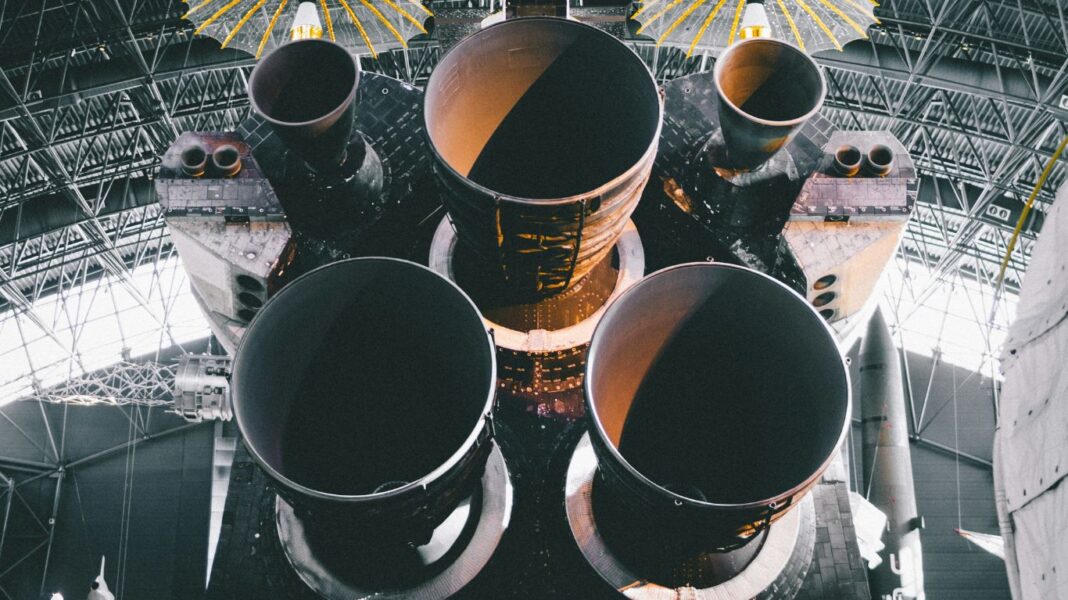Introduction
Exodus Propulsion Technologies. Space travel has always fascinated humanity, pushing the boundaries of what is possible. The advancements in propulsion technologies are the backbone of this endeavor, making it possible to explore the far reaches of our universe. One company at the forefront of this revolution is Exodus Propulsion Technologies, a pioneer striving to redefine space travel.
History of Space Propulsion
Space propulsion has come a long way since the early days of rocketry. Initially, chemical propulsion systems, like the ones used in the Apollo missions, were the norm. These systems relied on burning fuel to generate thrust, a method that, while effective, had significant limitations in terms of efficiency and speed. Over the decades, advancements in technology led to the development of more sophisticated propulsion systems, such as ion thrusters and nuclear propulsion.
The Need for Advanced Propulsion Systems
Current propulsion technologies face numerous challenges. Traditional chemical rockets are not only expensive but also inefficient for long-distance travel. Speed and efficiency are critical for missions beyond our solar system, necessitating the development of advanced propulsion systems that can overcome these hurdles.
Introduction to Exodus Propulsion Technologies
Exodus Propulsion Technologies was founded by a group of visionary engineers and scientists passionate about space exploration. Their mission is to develop cutting-edge propulsion technologies that will enable faster, more efficient space travel, opening new frontiers for humanity.
Core Technologies and Innovations
Electric Propulsion
Electric propulsion systems, such as ion thrusters, use electricity to accelerate ions to produce thrust. This method is highly efficient, allowing for prolonged operation with minimal fuel consumption. However, the thrust generated is relatively low, making it suitable for long-duration missions rather than rapid acceleration.
Plasma Propulsion
Plasma propulsion utilizes ionized gas, or plasma, to generate thrust. This technology offers higher efficiency and greater thrust compared to traditional methods. The main drawback is the complexity of generating and controlling plasma, which requires significant technical expertise and advanced materials.
Fusion Propulsion
Fusion propulsion is the holy grail of space travel. By mimicking the process that powers the sun, fusion propulsion promises unprecedented levels of efficiency and thrust. However, the technology is still in its infancy, with significant scientific and engineering challenges to overcome before it can be realized.
Electric Propulsion: The Future of Space Travel
Electric propulsion is already in use today, primarily for satellite station-keeping and deep-space missions. For instance, NASA’s Dawn spacecraft successfully used ion thrusters to visit the asteroid belt. The potential for electric propulsion in future missions is immense, with ongoing research aiming to improve its capabilities and applications.
Plasma Propulsion: Cutting-Edge Technology
Recent advancements in plasma propulsion are pushing the boundaries of what is possible. Researchers are developing new methods to generate and control plasma more efficiently, which could revolutionize long-distance space travel. The increased thrust and efficiency make plasma propulsion a promising candidate for future interplanetary missions.
Fusion Propulsion: The Holy Grail
Fusion propulsion remains a tantalizing prospect. Researchers worldwide are working on various approaches to achieve sustainable fusion reactions. While practical fusion propulsion may still be decades away, the potential it holds for rapid and efficient space travel keeps it at the forefront of propulsion research.
Comparative Analysis of Propulsion Technologies
Comparing electric, plasma, and fusion propulsion technologies reveals a spectrum of possibilities. Electric propulsion is highly efficient but limited in thrust, making it ideal for long-duration missions. Plasma propulsion offers a balance of efficiency and thrust, suitable for more ambitious missions. Fusion propulsion, once realized, could provide unmatched speed and efficiency, revolutionizing space travel.
Challenges Facing Exodus Propulsion Technologies
Despite their potential, these technologies face several challenges. Technically, the development and integration of advanced propulsion systems are complex and require significant innovation. Funding and investment are also major hurdles, as these technologies require substantial financial resources. Additionally, regulatory approvals and space treaties add layers of complexity to their deployment.
Collaborations and Partnerships
Exodus Propulsion Technologies collaborates with leading space agencies, private companies, and research institutions to advance their innovations. These partnerships are crucial for pooling resources, sharing knowledge, and accelerating the development and deployment of advanced propulsion systems.
Impact on Space Exploration
The innovations by Exodus Propulsion Technologies could drastically change space exploration. Faster and more efficient propulsion systems would enable more ambitious missions, such as crewed missions to Mars and beyond. They could also facilitate the establishment of permanent colonies on other planets, making human life in space a reality.
Commercial Applications
Beyond exploration, advanced propulsion technologies have numerous commercial applications. They can significantly reduce the cost and increase the efficiency of satellite deployment. Space tourism, a burgeoning industry, could also benefit from these technologies, making space travel more accessible to the public.
Environmental Considerations
The environmental impact of space travel is an important consideration. Electric and plasma propulsion systems are generally more environmentally friendly than traditional chemical rockets, producing less harmful emissions. Sustainable space travel is a key goal for Exodus Propulsion Technologies, aiming to minimize the ecological footprint of space missions.
Conclusion
Exodus Propulsion Technologies stands at the forefront of a new era in space travel. Their innovative propulsion systems promise to overcome current limitations, paving the way for faster, more efficient, and more sustainable space exploration. As these technologies mature, the dream of interplanetary travel and colonization becomes increasingly attainable.
